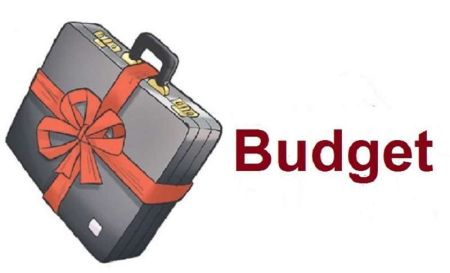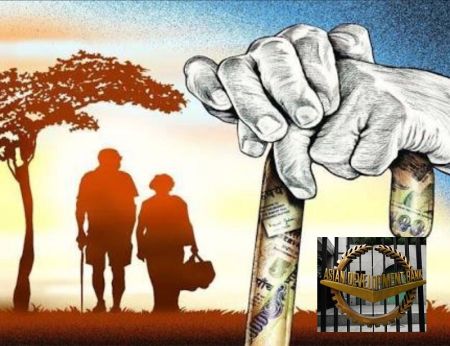By Akhilesh Tripathi

We all know that Nepal’s real estate sector has been in an ailing state for more than the past three years. The real estate and housing industry witnessed a speedy growth (which many say was an unnatural growth), until the Nepal Rastra Bank (NRB), regulator of the country’s financial market, suddenly restricted banks’ lending to the sector in September 2010. NRB not only put a ceiling on real estate loans but also made it mandatory for real estate buyers to declare their income source for purchase of property worth more than Rs 5 million.
Many bankers and real estate players compared this NRB move with a driver’s attempt to stop at once a car speeding along at 80 miles an hour. “When you press on the brakes to stop such a car at once, it is almost always doomed to crash. This is what happened to Nepal’s real estate and housing sector,” complain many bankers. According to them, maybe what happened to the country’s real estate industry over the past three years cannot be called a crash, but the industry was hit really, really hard.
But it seems things have started to change now, for the better. After a three-year long slump, Nepal’s real estate and housing sector has shown some signs of improvement of late. Many analysts and industry insiders are still hesitant to call it the beginning of a recovery but even they admit that cautious optimism has replaced the general mood of doom and gloom prevalent in the industry as early as even a few months ago.
Looking at the market at present, it is apparent that the genuine, long-term developers have survived the slump, while those who joined the fray just for fast cash have, perhaps, been combed out. Meanwhile, the NRB, too, has adopted a bit flexible approach to the sector in this period which the private sector stakeholders deem as inadequate. Similarly, there have been reports that real estate and housing borrowers who had the banks’ doors shut for them until recently have started getting scrutinized entries into the banks.
There are some other signs as well that indicate that the realty sector might have started to climb up. According to real estate entrepreneurs and housing developers, this business has growth by 33 per cent in the first half of the current fiscal year, compared to the same period the previous year.
Government revenue from this sector, too, has increased by nearly Rs 370 million in the first six months of this FY, compared to the same period the previous FY. Given these developments, Nubiz asked some of the major players of Nepal’s realty sector, bankers and regulators whether the sector has really started to witness a revival? Here is what they had to say:

ICHCHHA RAJ TAMANG
President
Nepal Land and Housing Developers’ Association (NLHDA)
‘There are positive signs’
This sector was doing very well. We all know that. But then some banks started speculative lending which was followed by others. This provoked the NRB to take stringent measures in the real estate and housing. The NRB, too, should not have implemented that decision at once. Anyway, the combined effect was that the realty sector faced a long slump.
However, we have seen some positive signs for the realty sector in the first half of the current fiscal year. Statistics show that this sector has grown by 33 per cent in the first six months of the current fiscal year than the same period of the previous fiscal year. We hear that government revenue from the sale of land and houses has gone up in the first six months of this fiscal year. That is another indicator that the sector might have started picking up. Banks, too, have started new home loans at lower interest rates. Though they appear hesitant to invest in the housing apartments, their lending to individuals for land and houses, and loans to multi-storied commercial business complexes being built around Kathmandu have increased in recent months.
These are good signs for the realty sector. The other important thing is this market has already witnessed almost the rock-bottom situation. This situation could not continue forever; it had to show the signs of revival. That is what has perhaps started to happen.

BHESH RAJ LOHANI
Secretary
Nepal Land and Housing Developers’ Association (NLHDA)
‘Market activity has increased’
In the first six months of the current fiscal year, the government has collected Rs 2.27 billion in revenue from the sale of land and houses. The figure was only Rs 1.9 billion in the first six months of the previous fiscal year. It is true that the increased tax rates have contributed to this growth but the number of land and house transactions has also increased this year. The sales of low-priced land and houses have particularly gone up.
Banks have lowered their interest rates for loans from as high as 17 per cent last year to around 10 per cent recently. Remittance inflow has grown; this too has helped the real estate business. The NRB, too, has adopted somewhat liberal policies for the real estate sector, especially after the sector fell into a deep crisis from which it is struggling to come out now. There are scores of middle-class families who need houses and apartments as their permanent residences. Stand-alone houses are still bigger attractions for Nepalis than the apartments. Recent experiences, too, have shown that.
If the current growth rate continues, then we can expect more investment in this sector by the end of this fiscal year. The realty business was stagnant for almost three years. Many buyers were waiting for the prices to come down. And the prices have indeed come down significantly, compared to three years ago. So, market activities have surely increased.

BHASKAR MANI GYAWALI
Spokesperson
Nepal Rastra Bank
‘Real estate is gradually improving’
We have observed that Nepal’s realty sector has shown a gradual improvement over the past few months. The improvement has not been as expected. But what I can say is the country’s real estate sector has seen its worst; things will only improve from here. Actually this process has already started. As the regulator, NRB has done all it could, to help banks recover their loans to this sector. NRB’s directives issued from time to time have helped the real estate sector to overcome the crisis it has been in for more than the past three years.
Speculative pricing by some real estate players and speculative lending by some banks is mainly to blame for the realty slump in Nepal. The only solution to the problems in the real estate and housing sector is that real estate owners and housing developers should be ready to sell their property at minimal profits, sometimes without any profit and in some cases even at certain amount of loss. Otherwise, the interest of the bank will keep rising and they will be sinking deeper and deeper in the problem. If this is done, 75 per cent problems of the real estate and housing sector will be automatically resolved.
In recent months, banks have started issuing new home and land loans at lower interest rates. This is good sign. Government revenue from the sale of land and houses, too, has witnessed almost one-third growth in the first half of this fiscal year compared to the same period the last fiscal year. This also shows that the real estate business might have started to pick up. I am sure that the situation will improve further in the days to come.

ANIL SHAH
CEO
Mega Bank
‘We can’t really say that the revival has started’
Given the current situation, we can’t really say that the realty sector has shown improvements. However, the good thing is the downward spiral has stopped. Some big apartment companies are still in problems. In fact, it is these companies that are responsible for delaying the recovery. So, the reality is the improvement in this sector is definitely not as expected. The banks, too, are not very willing to invest in this sector, especially in the apartments.
The buyers, too, are not interested in the apartments. However, now the banks are not compelled to put home loans up to Rs 10 million under real estate loans; the NRB has shown this much flexibility. This relaxation has surely helped the banks, which have invested nearly Rs 150 billion in the real estate sector, and also the real estate promoters.
We can’t really say that a revival has started in the realty sector. We’d better wait for some more time and see how things unfold. Meanwhile, the NRB did not say a word about the real estate sector in the mid-term review of the Monetary Policy for the current fiscal year. It must have disappointed the entire sector as well as the banks which have a sizeable investment in this sector.





















